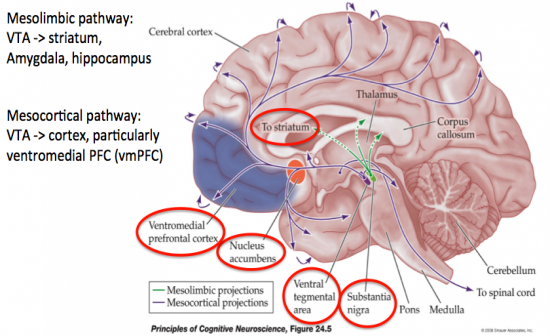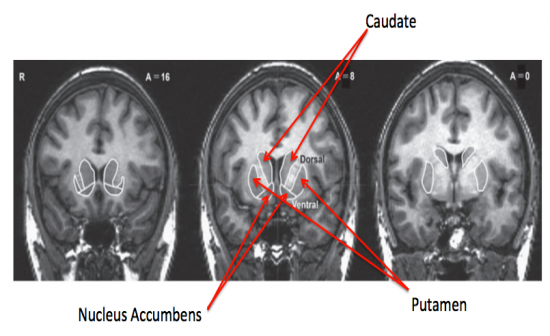Cards In This Set
| Front | Back |
|
3 Types of Decision Making
|
1. Perceptual
2. Social 3. Value-based |
|
3 Conditions of Value-Based Decision Making
|
|
|
Neuroeconomics
|
Aka "Decision Neuroscience"
How can economics help us understand the brain? How can the brain help us understand economics? |
|
Risk Aversion
|
The tendency to avoid risks, even if the overall expected value is lower
|
|
People tend to choose higher value option but...
|
...conceptions of what is higher value differs
|
|
Framing
|
The way a decision is framed (i.e. loss vs gain) changes people's preferences towards it
|
|
How do we make difficult decisions?
|
1. Balance short term desires and long term goals
2. Compute the value of each option and choose higher |
|
Mesolimbic Pathway
|
VTA -> Striatum, Amygdala, Hippocampus
|
|
Mesocortical Pathway
|
VTA -> Cortex (particularly VMPFC)
|
|
How is value represented neuronally?
|
 DA release from the Ventral Tegmental Area (VTA) and Substantia Nigra (SN ) |
|
Striatum (part of what, includes what)
|
 -Part of Basal Ganglia -Made of Caudate, Putamen, NAc |
|
Dorsal Striatum Function
|
Acting (selecting the best response)
|
|
Ventral Striatum Function
|
Encodes pure valuation signal (especially NAcc)
|
|
VMPFC Function
|
Integrates info from many brain regions
-dopaminergic input from VTA/SN -exec control info from DLPFC Important for encoding value, but more complex |
|
Rat Brain Stimulation value studies show...
|
...that value scales with the amount/rate of stimulation. Increase in Hz -> increase in bar pressing.
|



